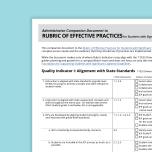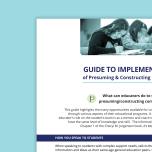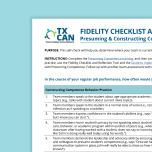Effective Practices for the Education of Students with Complex Access Needs
This video covers the role of the administrator, background history, common misconceptions, and the research and data behind educating students with significant cognitive disabilities. This video aligns with the Rubric of Effective Practices for Students with Significant Cognitive Disabilities.
Related Content

Significant Cognitive Disabilities, Inclusion
Presuming Competence for Students with Complex Access Needs

Significant Cognitive Disabilities, Assistive Technology, Instruction
Connecting Communication and Instruction for Students with Complex Access Needs

Significant Cognitive Disabilities, Instruction, Assistive Technology
Designing and Supporting Instruction

Significant Cognitive Disabilities, ARD/IEP Supports, Instruction
Building a Foundation

Significant Cognitive Disabilities, Behavior, Instruction, ARD/IEP Supports, Inclusion
Rubric of Effective Practices for Students with Complex Access Needs

Significant Cognitive Disabilities, ARD/IEP Supports, Instruction, Assistive Technology, Behavior, Inclusion
Administrator Companion Document to the Rubric of Effective Practices for Students with Complex Access Needs

Significant Cognitive Disabilities, Inclusion
Guide to Implementation of Presuming and Constructing Competence

Significant Cognitive Disabilities, Inclusion
Fidelity Checklist and Reflection Tool: Presuming and Constructing Competence

Significant Cognitive Disabilities, Inclusion
Importance of Presuming Competence for Students with Complex Access Needs and the Least Dangerous Assumption

Significant Cognitive Disabilities, Inclusion
Least Dangerous Assumption: Evidence Based Practices for Students with Down Syndrome

Significant Cognitive Disabilities, Assistive Technology
